Gardeners have all kinds of reasons for planting bamboo. Whether you’re creating a zen garden or simply in need of a good privacy hedge, bamboo is resilient, pragmatic, and aesthetically pleasing. And from bicycles to bath towels, there’s almost nothing that can’t be made from this impressive grass. Although your average gardener might not be so industrious. But even for the amateur hobbyist, a sturdy grove of bamboo can provide a great variety of uses.
From arts and crafts to light construction, bamboo poles are famously strong and easy to work with. From the hundreds of species of bamboo, you can grow poles as thin as a pencil or up to several inches in diameter. Most poles are hollow, but some are solid. They make excellent fishing poles, sturdy ski poles, very attractive curtain rods, effective garden stakes, and strong supports for awnings and canopies. You can also split thicker bamboo poles into slats that look great as accents around windows, picture frames, and baseboards. We’ve even had track & field coaches buying thinner poles by the dozen for javelin practice.
NOTE: This article on bamboo poles first appeared in August 2019, most recently updated in May 2024.

You get the idea. Bamboo is incredibly useful. It’s also cheaper than lumber, has greater tensile strength than steel, and grows like a weed. It’s no surprise then that we hear so many people asking which species of bamboo is the best to grow and harvest for poles.
So what’s the best variety of bamboo to grow for your upcoming project? Well, that depends on the nature of your project. It also depends on your climate and growing conditions.
There are about 2000 varieties of bamboo to choose from, so identifying the best choice is no simple task. But let’s take a look at some of the most favorable options.
Best species of bamboo for poles and canes
One thing that virtually all bamboo has in common, it grows with long, straight poles. Though it’s a member of the grass family, the woody culms are as strong as lumber. And generally speaking, most bamboos grow pretty quickly. So no matter what kind of bamboo you plant, you’ll probably have an abundance of poles to harvest within a few years.
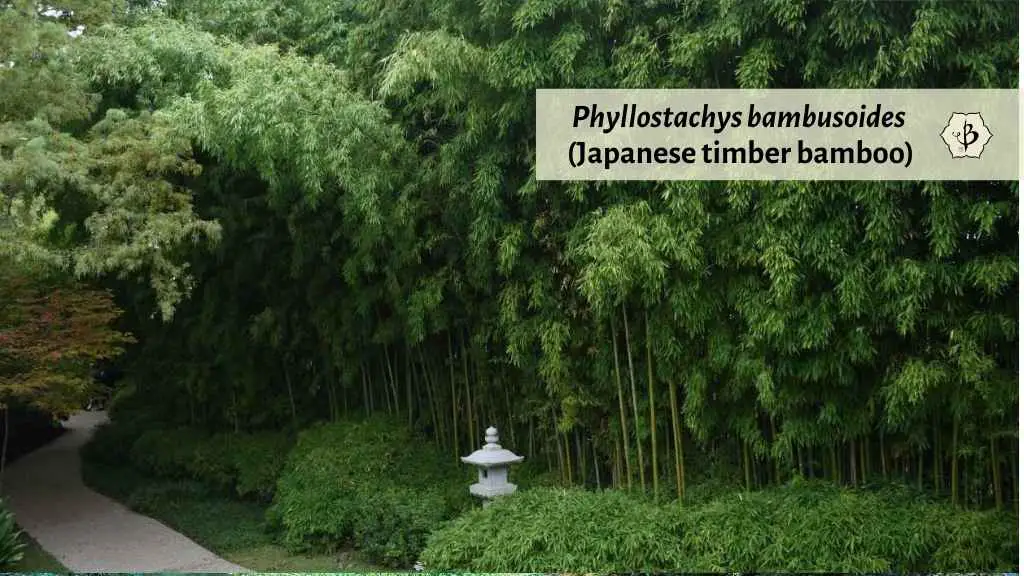
Timber bamboo (3-5″ diameter poles)
RUNNERS
Phyllostachys bambusoides: Commonly known as Madake or Japanese timber bamboo, this massive species has an attractive combination of handsome canes and dense, dark green foliage. Canes can reach about 60-70 feet in height and 5 or 6 inches in diameter in their native habitat. Elsewhere, in more temperate climates, it might only grow half that size, or less, and not as quickly.
Culms of Japanese timber bamboo grow smooth, green and very straight. The culms walls are thick and the wood is very strong and resistant to cracking. For this reason, it is widely used in furniture making. It is also the ideal choice for making shakuhachi flutes.
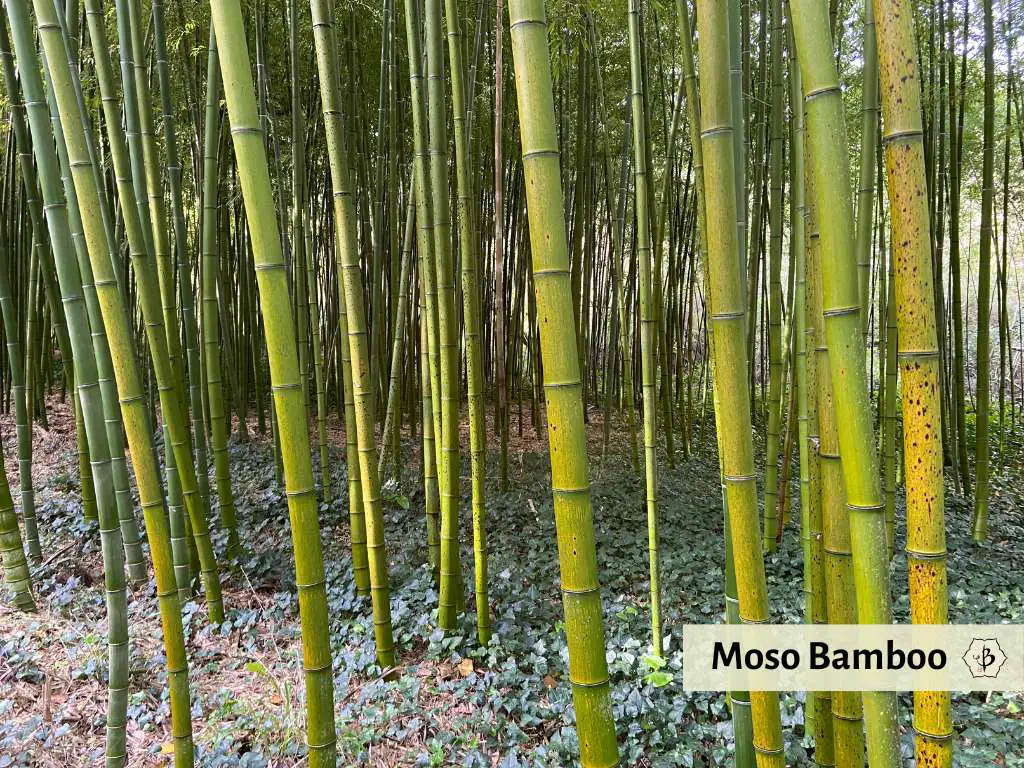
Phyllostachys edulis: Perhaps the most widely grown species of bamboo in the world, P. edulis (also known as Moso bamboo) is the Chinese variety that is used for making bamboo clothing, bamboo flooring, and dozens of other applications. As the name suggests, its tender young shoots are also edible.
A very attractive species, with deep green canes, Moso bamboo looks great in parks and botanical gardens, but it may be difficult to maintain unless you have some acreage to work with. The poles can get up to about 4-5 inches in diameter, and close to 100 feet tall. If you have an ambitious construction project in mind, no job is too big for this massive bamboo. It’s a more difficult species to grow, however, especially if you are west of the Mississippi.
Sometimes you’ll get thin yellow stripes on some of the culms, but the poles will turn a nice shade of yellow once they’re harvested and dried.
Phyllostachys nigra ‘Henon‘: This cultivar is much larger than the original species, Black Bamboo. Henon, also called Giant Gray, has towering culms, 4 to 5 inches thick, with a beautiful greenish-gray hue. Not quite as big Moso or Vivax, but it’s a very attractive plant that produces strong, sturdy culms. It also grows very well in the American Southeast, much better than Moso.

Phyllostachys viridis ‘Robert Young’: One of the most attractive temperate bamboos, Robert Young has a most distinguished appearance. Stout, three-inch culm are golden yellow, with erratic green stripes. At 30 to 40 feet tall, it can serve as a privacy screen or a specimen plant. The poles are good-sized and unmistakably beautiful. But keep in mind, the stripes will fade out once the poles are harvested and dried.
Phyllostachys vivax: One of the most impressive varieties of timber bamboo, vivax grows quickly and produces formidable poles. This is a fairly cold-hardy species that can survive winters as cold as -15 F. But in the best conditions, it can grow well over 50 feet tall with culms 4-5 inches in diameter, closer to 6 in the Deep South. Younger canes will be greener, but turn yellow over time. Culm walls are not as thick, so this species isn’t ideal for building.
Just make sure you have enough room before you plant one of these in your yard. All varieties of Phyllostachys are running bamboo. And with canes that big, it’s going to need some room to spread out. Check out our article on Bamboo Containment for some helpful tips.
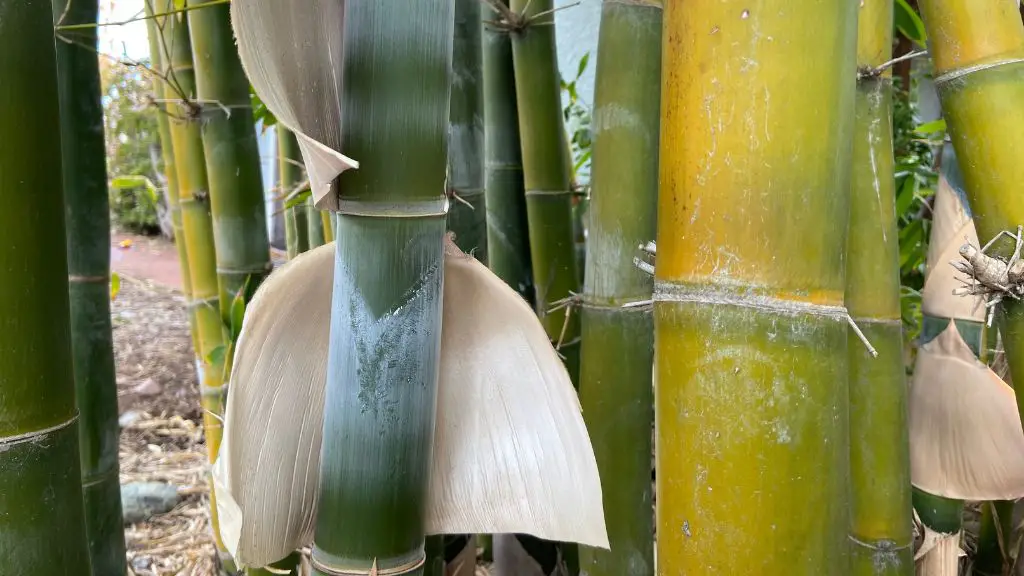
CLUMPERS
Bambusa oldhamii: Sometimes called Oldham’s bamboo, this is one of the most widely grown varieties in the United States. Its thick foliage and robust culms give it a very elegant appearance. The poles, often growing more than 50 feet tall and up to about 4 inches in diameter, are excellent to work with.
Oldham is also a clumping variety, rather than a runner, which makes it even more appealing to gardeners. It can be difficult to find a type of bamboo that will grow such substantial poles without also taking over the whole garden.
Bambusa balcooa: This is a widely grown and economically important species in India and southern Asia, also grown commercially in Africa. A great choice in warmer climates. The culms are known for their thick walls, which make the poles superior for building and construction. Canes can get 60-80 feet tall and 5-6 inches in diameter.
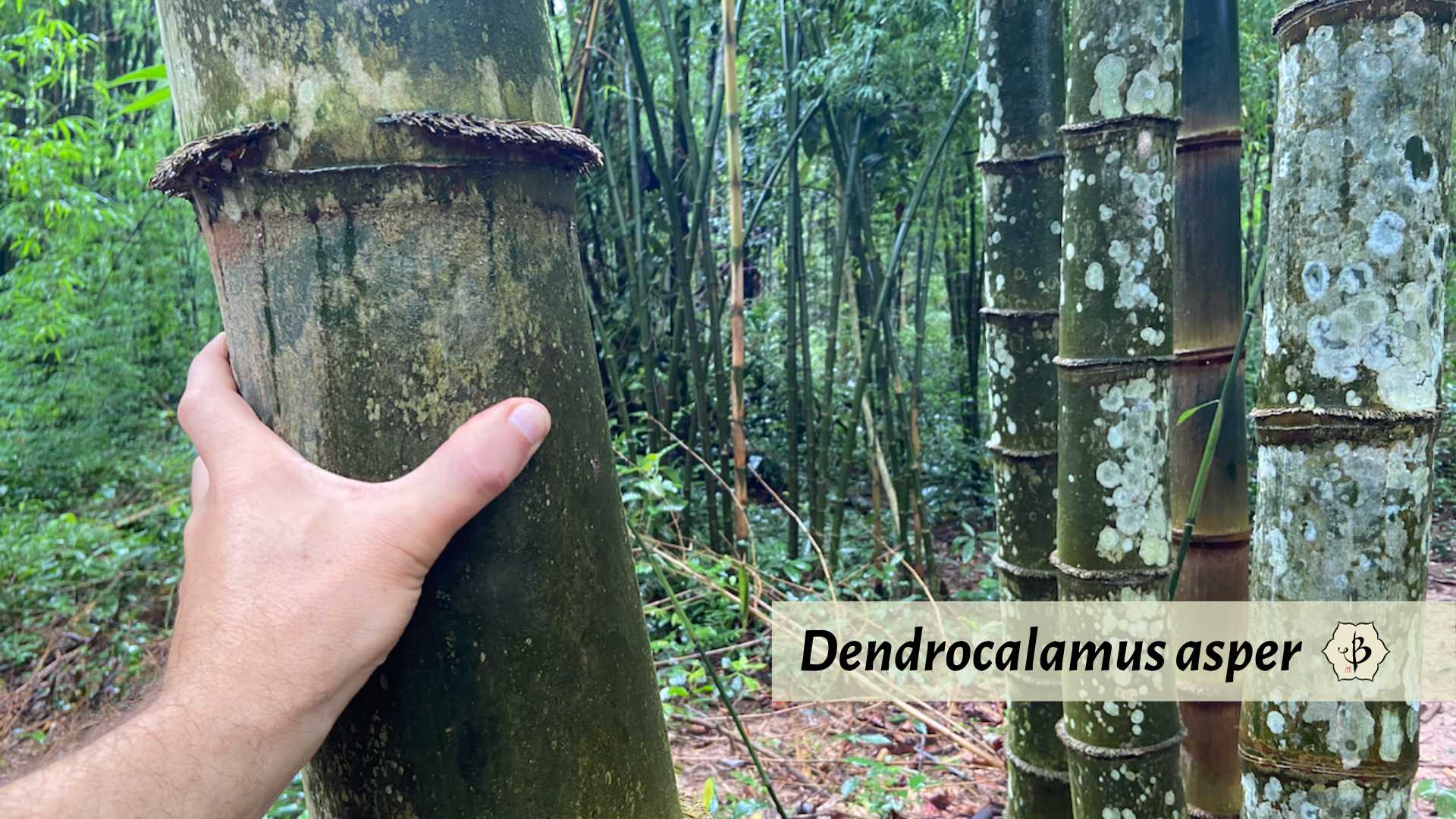
Dendrocalamus asper: Asper, sometimes referred to simply as Giant Bamboo, is one of the most popular species for commercial bamboo farmers in tropical regions. Clumps are dense and vigorous, producing massive poles that are extremely strong and remarkably straight. Thick culm walls make the poles almost indestructible. But unless you live in Florida or Southern California, it’s likely to do well in your garden.
Dendrocalamus giganteus: A close relative to Asper, this giant bamboo is somewhat more attractive as an ornamental bamboo, with its smooth and luxurious poles. But they may be slightly thinner than the Asper culms. Unless you’re engaging in some serious construction, the difference is negligible, so you may prefer this species simply for its beauty.
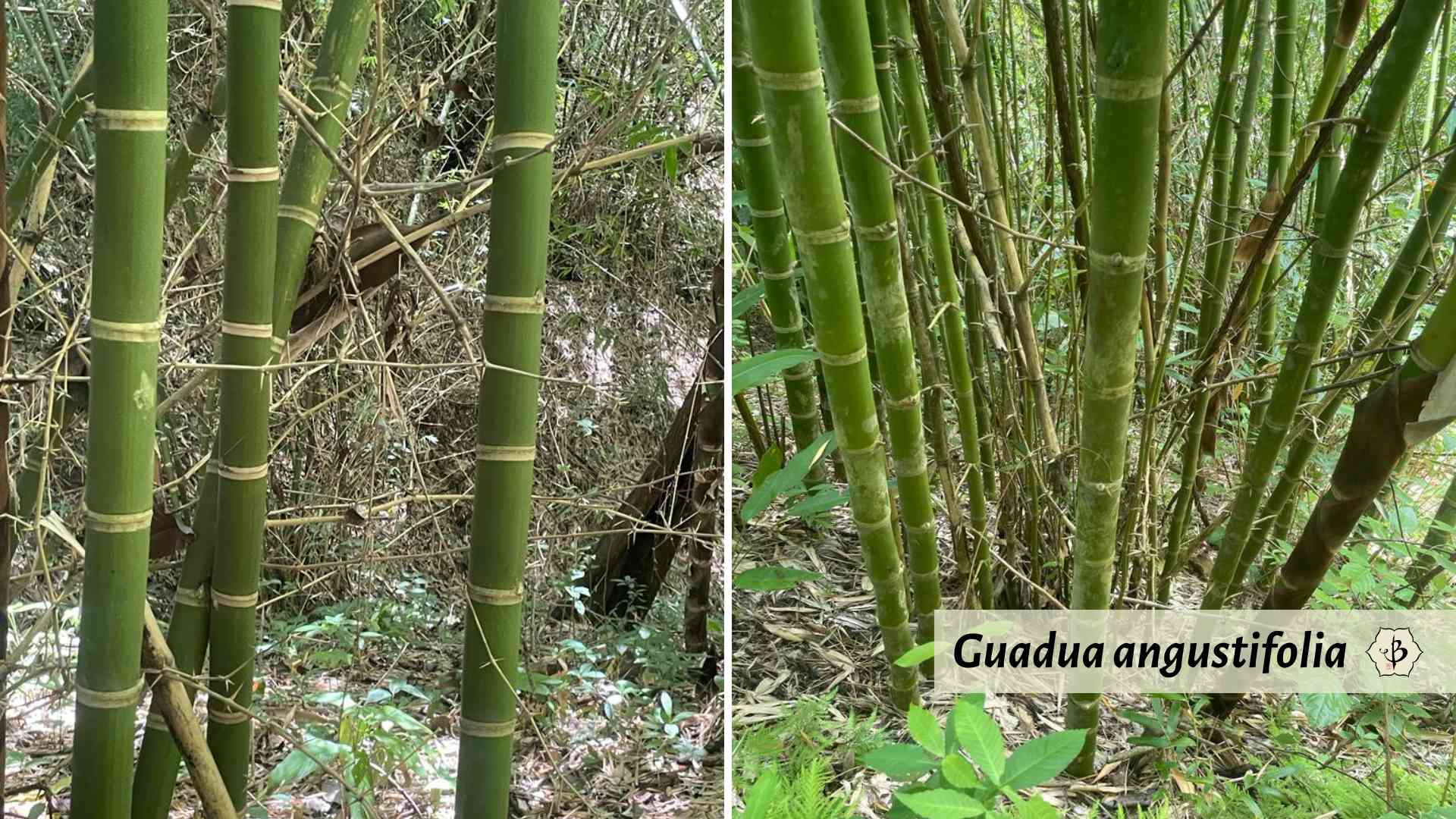
Guadua bamboo: The most popular variety of bamboo in Central and South America, Guadua is not only tall and thick, but it’s incredibly strong as well. So strong that it’s earned the nickname “vegetal steel”.
Unless you live in Latin America, or some other semi-tropical region like Florida, you will have a difficult time growing this species at home. But if you’re looking to purchase bamboo poles for a building project, most bamboo specialists consider this the best variety, especially in the western hemisphere. (In Bali, Indonesia, they are keener on Dendrocalamus.)
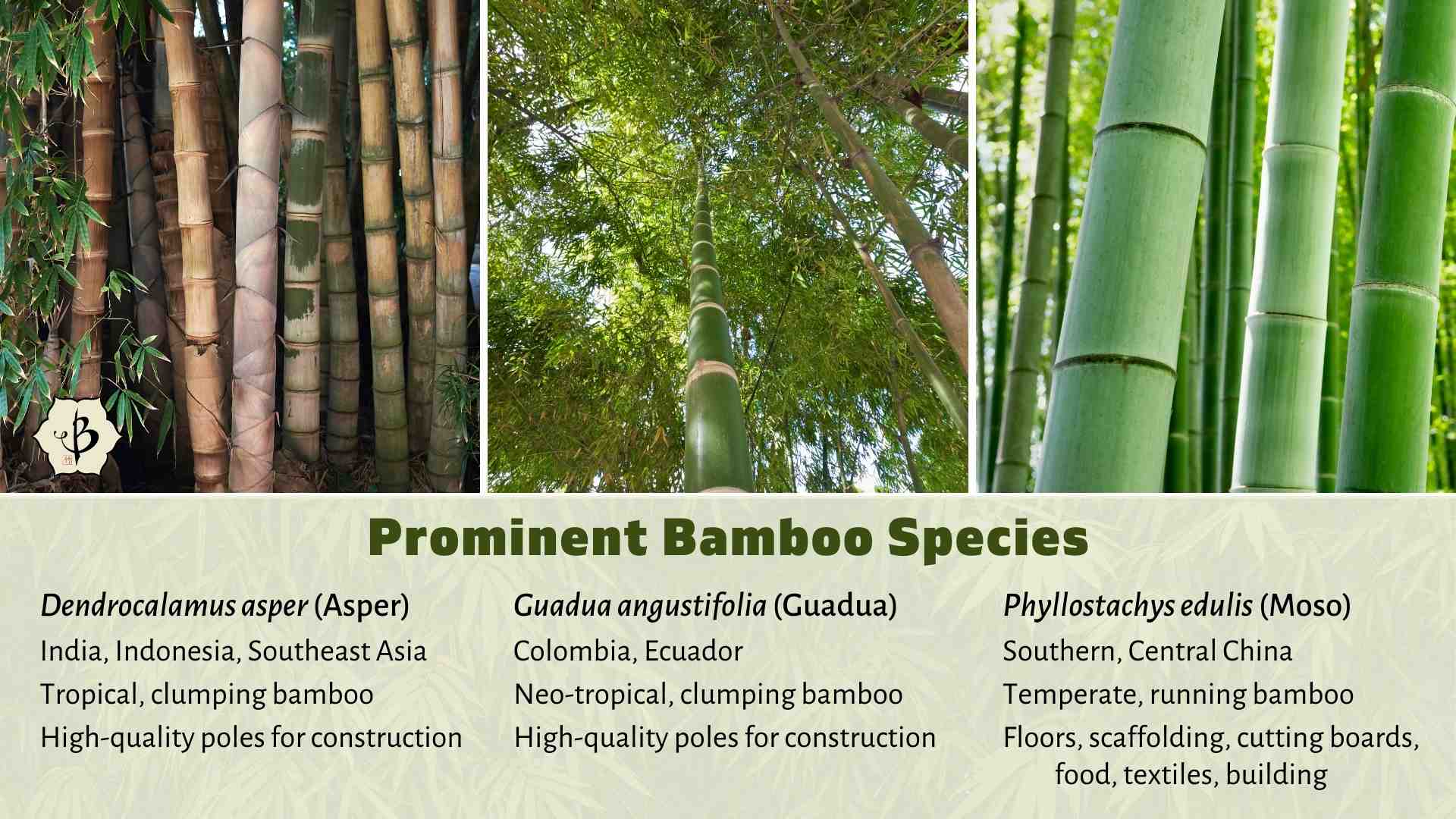
Small to medium size bamboo poles (1-2″)
Chimonobambusa tumidissinoda: Walking stick bamboo, as it’s commonly known, has a long tradition of being used for walking canes. This exotic Chinese bamboo has unusually pronounced nodes that bulge out, making for pretty frustrating curtain rods but very interesting walking sticks or accent pieces. They can be fashioned into especially attractive handles for drawers and cabinets.
Chusquea gigantea: This South American clumping bamboo is most notable for having solid culms, which make for an incredibly strong and sturdy building material. It’s also one of the most cold-tolerant varieties from South America, hardy down to about 0º F.
Depending on the climate, this bamboo can grow 20-40 feet tall with culms 1-1.5 inches in diameter. It makes for a great privacy screen as well as a superior building material. The attractive poles have a rich yellow color, but dark green at the nodes, and large, lush leaves which don’t start until higher up on the plant. C. gigantea, as the name suggests, is the largest specimen of this genus, and sometimes you can even order it from a bamboo specialist nursery in North America.
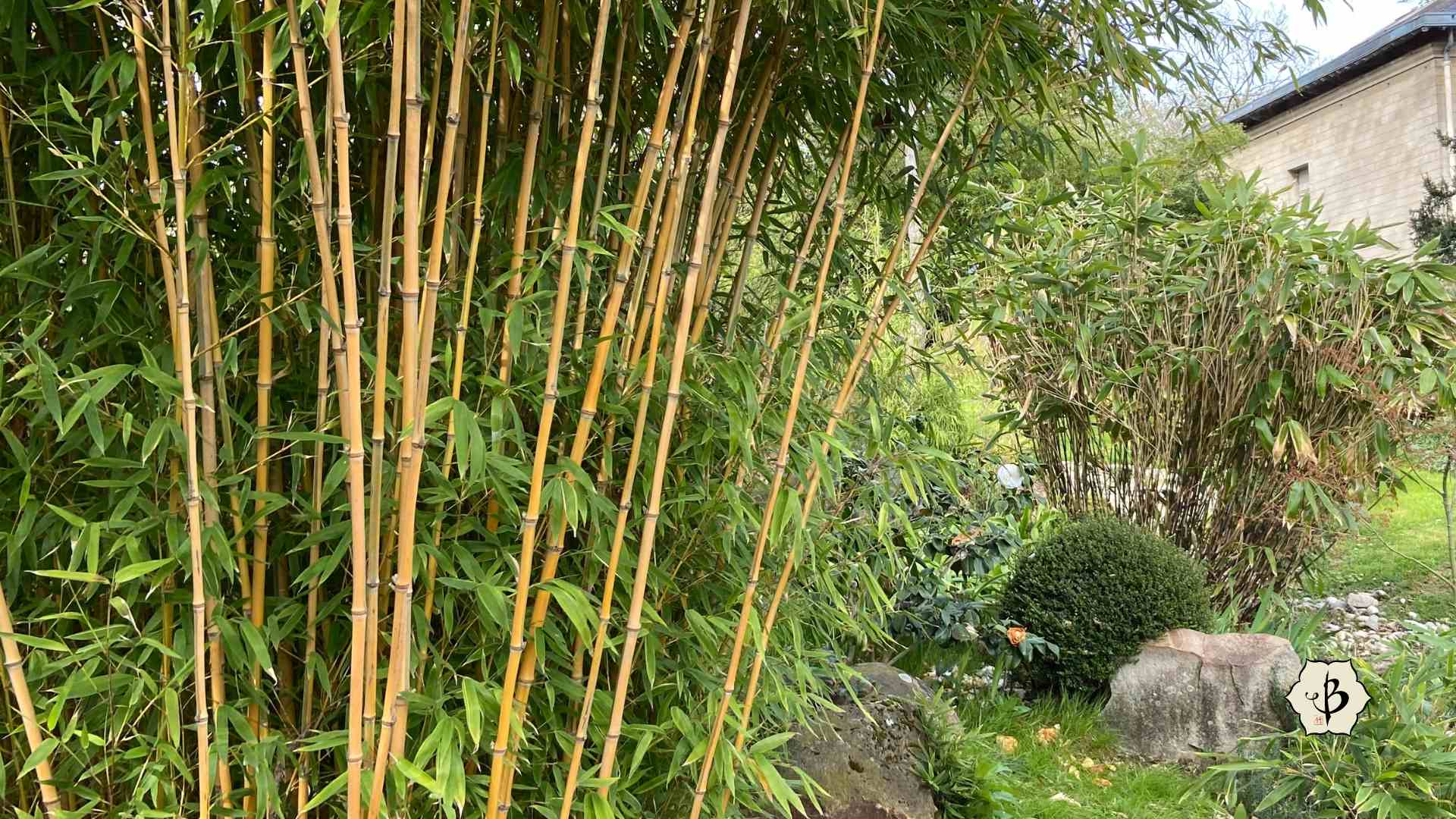
Phyllostachys aureosulcata: Another running bamboo from China, P. aureosulcata has a few different cultivars, namely ‘Spectabilis’ and ‘Yellow Groove’. The poles are interesting because Spectabilis is yellow with a green stripe in the sulcus groove, and Yellow Groove is predominantly green with a yellow stripe.
Sometimes the culms of a spectabilis specimen will grow in a crooked, zig-zag manner. This unusual appearance can make a real impression. But the vast majority of poles will grow straight, making them easier to work with for crafts and building.
Both cultivars are very cold hardy, down to around -15 F. The canes ordinarily get to about 2-2.5 inches in diameter and 30-50 feet in height.
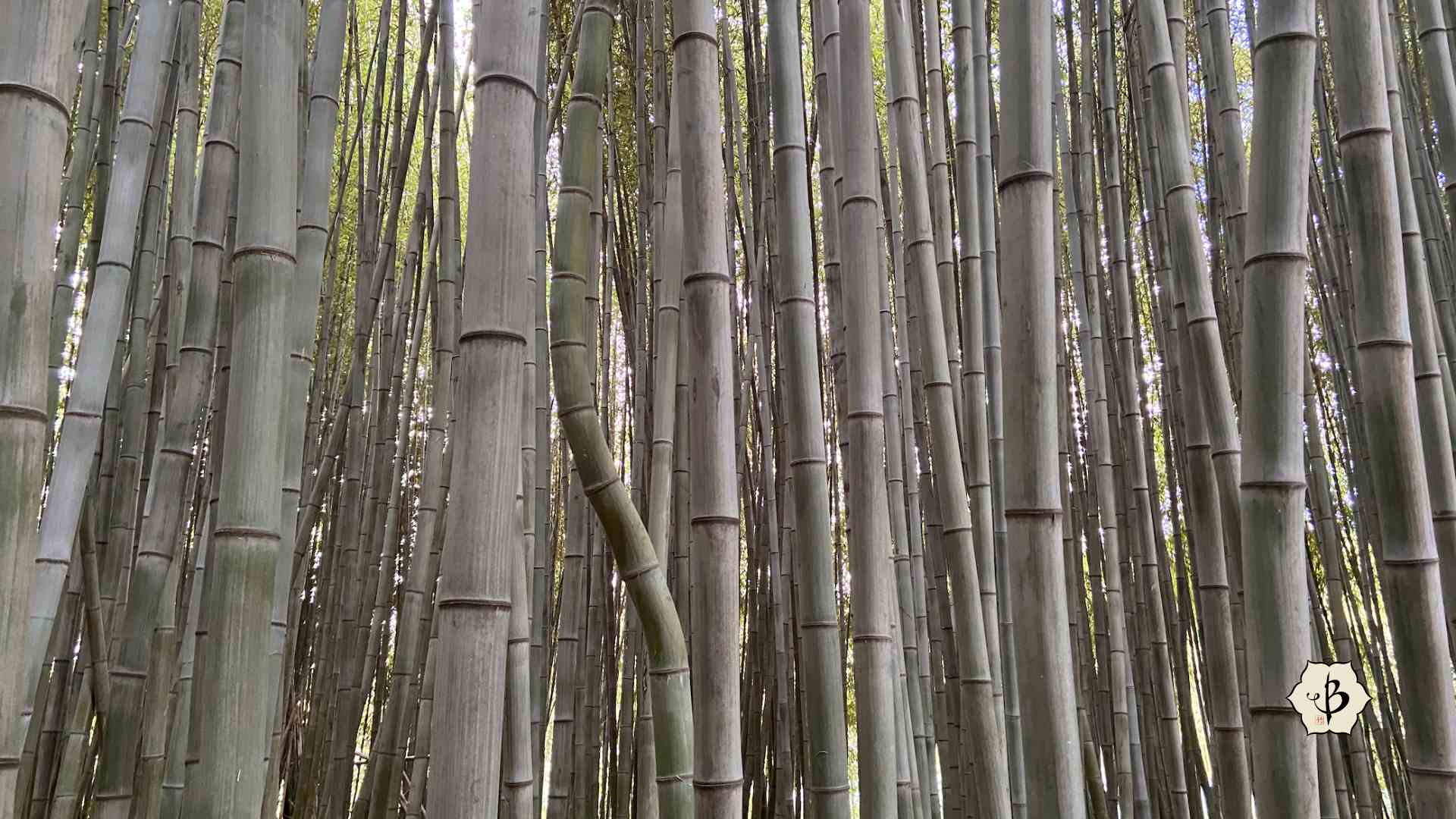
Phyllostachys viridiglaucescens: Less common in the United States, this species is more popular in Europe. Like all Phyllostachys varieties, it’s very cold-hardy. More importantly, most of the poles are extremely straight with thick walls, although some of them can zigzag. As an ornamental, the plants have a very attractive deep green sheen. The botanical name translates as “Green waxy bamboo.”
Phyllostachys nigra: Usually referred to simply as Black Bamboo, the distinctively dark brown (not quite black) shoots make this one of the most popular species of bamboo. Any nursery that sells bamboo is likely to have some of this on hand.
As the plant matures, the dark color of the culms grows richer, making for a very attractive contrast against the bright green leaves. Moreover, when the poles are dried, they retain that dark color, sometimes taking on a speckled appearance. The richly-colored poles lend themselves to any number of decorative uses, from fencing to furniture.
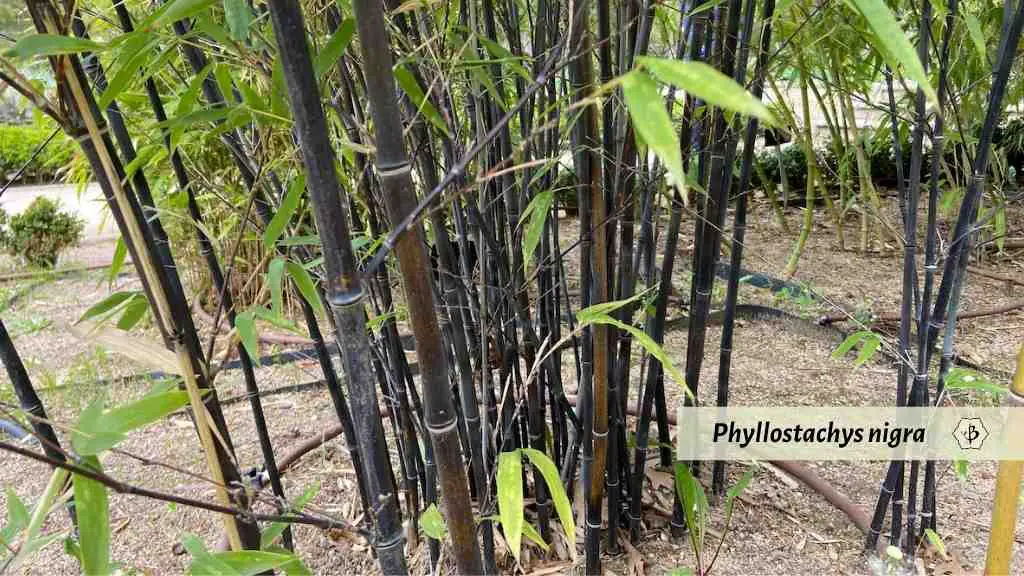
Native to the Hunan Province of southern China, gardeners now cultivate black bamboo all over the world. Although it thrives best in its own subtropical habitat, it can grow very well in USDA zones 7-10. If planted in rich, loamy soil, black bamboo can get 20 to 30 feet tall with mature culms of 2 inches in diameter.
Pseudosasa amabilis (Tonkin bamboo): Famously grown for fly-rod fishing poles, this Vietnamese bamboo grows tall (up to 50 feet) and thin, and very straight, with smooth nodes. As such, the canes can be very useful. Besides the traditional fishing poles, still manufactured by a handful of artisans, Tonkin bamboo also makes excellent ski poles. Of course, these canes are great for simple projects like curtain rods and gardening stakes, too.
Pseudosasa japonica (Arrow bamboo): This beautiful species earned its name from the long, strong, straight poles, which Samurai warriors once used to make arrows. Although technically considered a runner, it has a far more restrained growth habit than most bamboos of that class. The graceful poles and broad green leaves make this a popular variety of bamboo, and relatively easy to find.
Arrow bamboo can grow 15-20 feet tall, with stick canes not more than 1-1.5 inches thick. It’s a fairly cold-tolerant species that can get down to around 0º F.
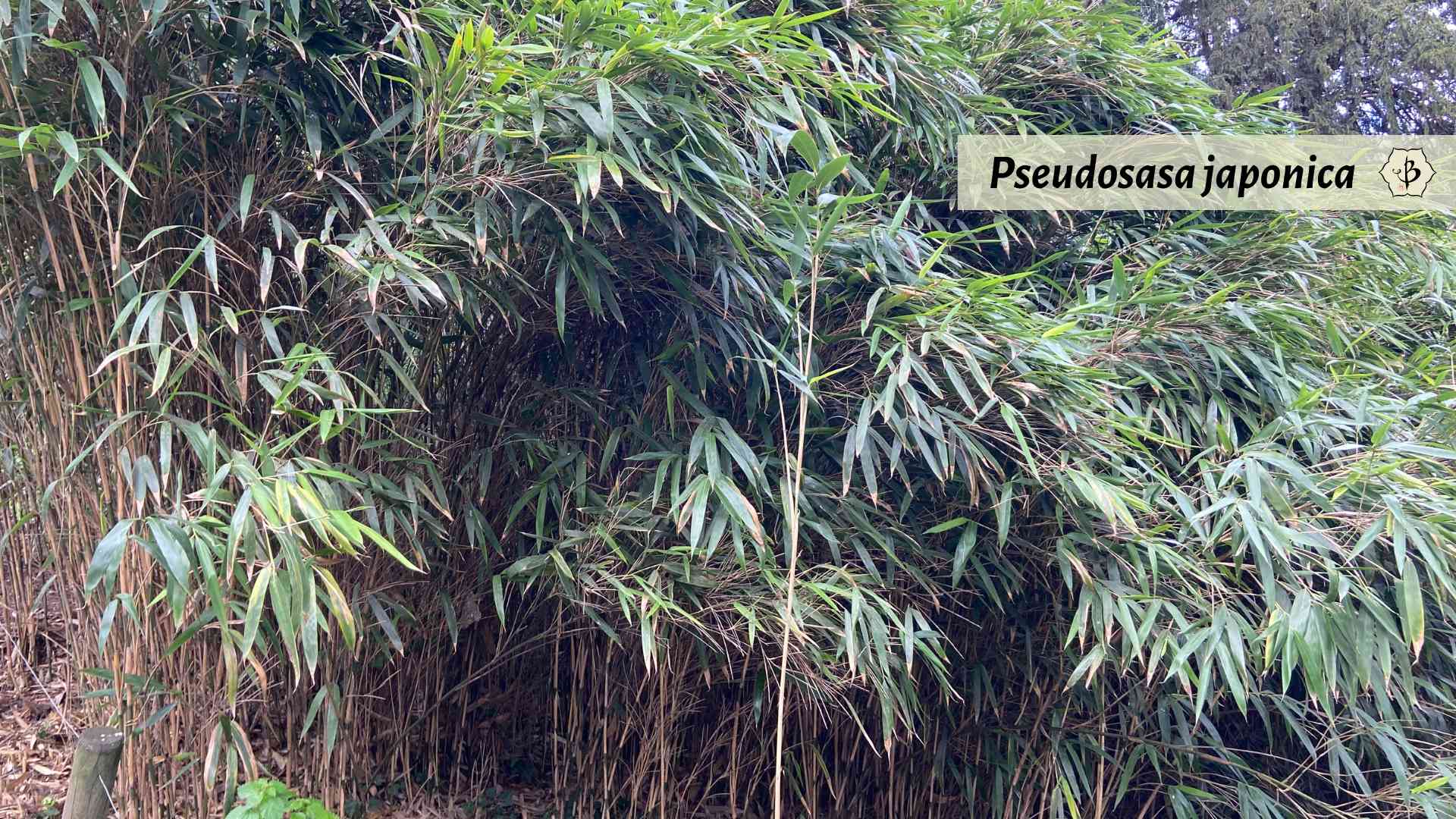
Solid bamboo poles
Everyone expects bamboo to be hollow in the middle, but that’s not always the case. Some bamboo actually has solid culms, and these varieties can be excellent to work with, especially for building or furniture making.
The genus Chusquea, from South America, includes several species of solid bamboo. There are also a couple of varieties from Southeast Asia, such as “Tre Gai” and “Tam Vong” from Vietnam. There is some disagreement on the botanical names of these exotic varieties, but many believe them to be Bambusa blumeana and Dendrocalamus strictus, or possibly Thyrsostachys oliveri. You’ll probably have to go to Southeast Asia to find them, so use the local names in that case.
Check out our in-depth article on Solid Bamboo Species to learn more.
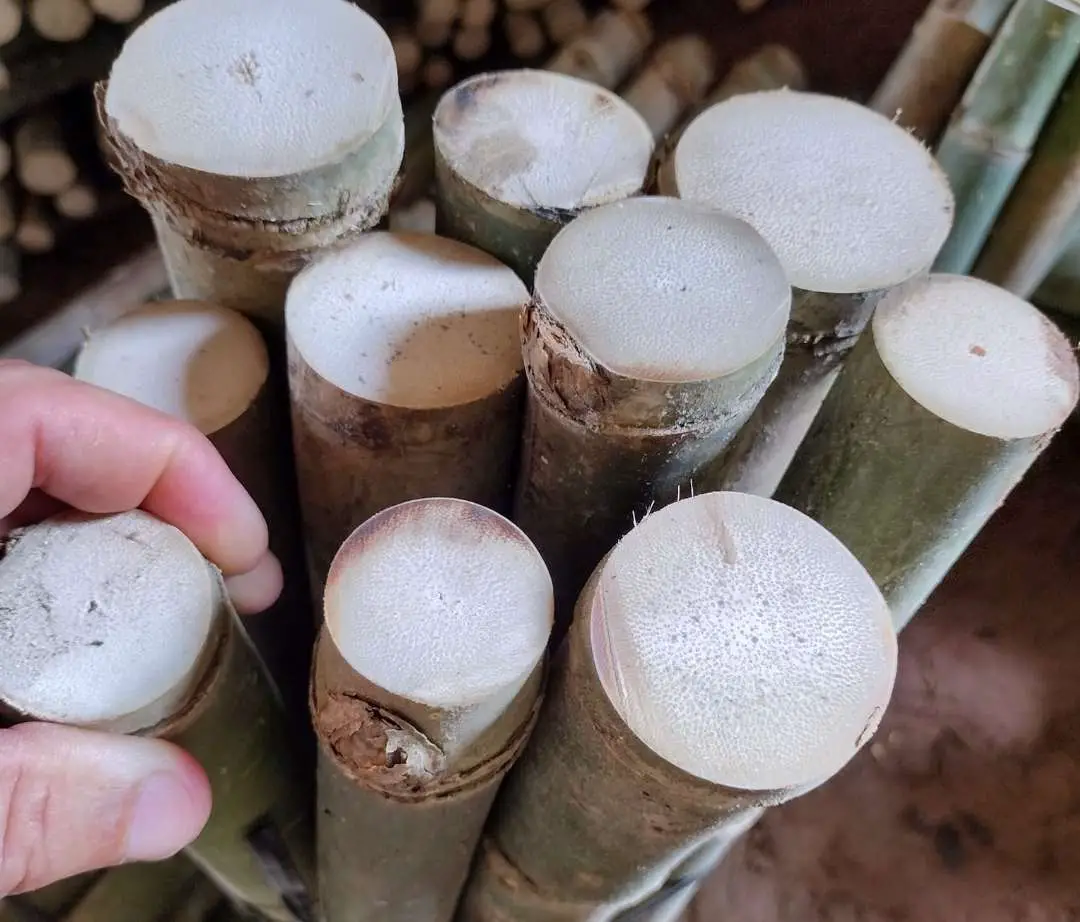
How to cure bamboo poles
After harvesting your bamboo poles, but before you start building, it’s best to cure them somehow to prevent cracking or uneven drying and warping. The simplest thing to do is lay it out somewhere dry, not too hot or too cold, with adequate air circulation. An open-air rack in the shade is ideal. It’s also a good idea to rotate the poles regularly.
It can take several weeks or even a few months for timber bamboo poles to dry out thoroughly. You can watch the color change, usually from green to yellow, as it dries.
In addition to drying the poles, they also need some sort of treatment to protect them from pests and the elements. The most popular ways to do this are chemically with borax, or more naturally with heat.
For more tips and complete details on the best methods for treating bamboo poles, check out this in-depth article: Several ways to treat your bamboo for building.

Further reading
If you found this interesting and informative, be sure to have a look at some of our other stimulating articles.
- Growing Bamboo: The complete how-to guide
- Best bamboo varieties for hedges and privacy screens
- The best bamboo varieties for construction
- Raw materials and the bamboo supply chain
FEATURE IMAGE: Dendrocalamus asper bamboo poles. Photo by Fred Hornaday.
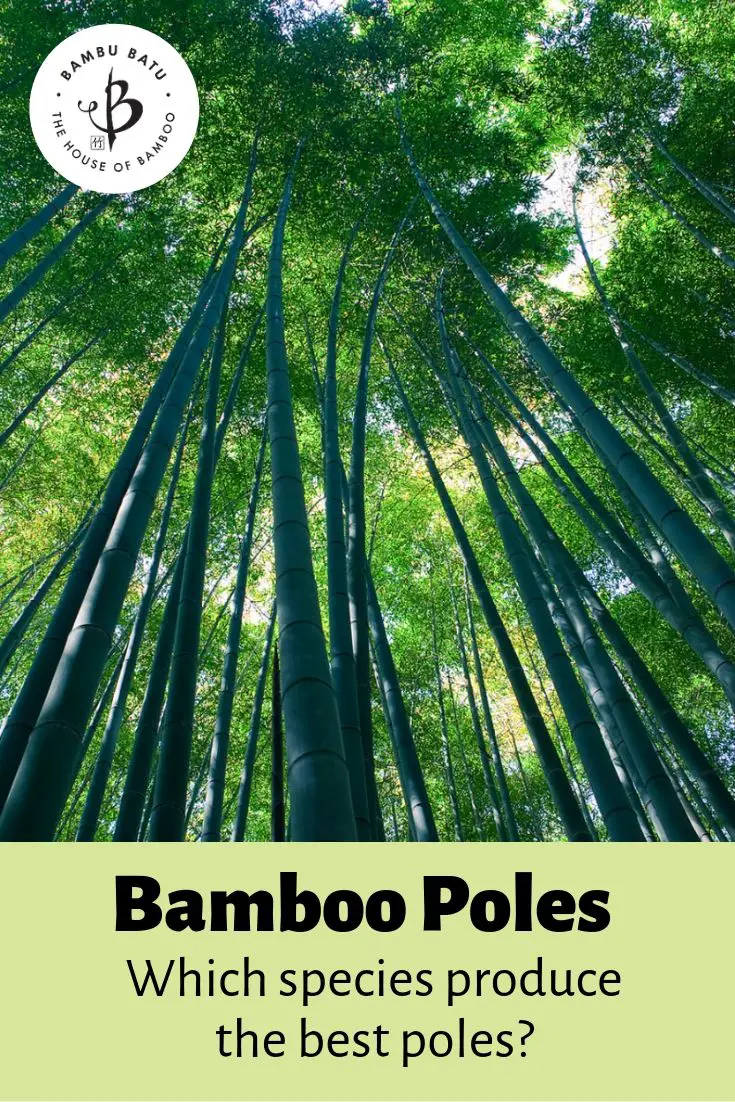


























Fred!
Bamboo has been everything from a nuisance to a boon throughout its long and noteworthy existence. The human factor of cultivation seems to figure in strongly here… With a little care and a lot of oversight, it can become a wonderful asset to our botanical bounty, as you well know. Again, we find ourselves entangled with the basic and existential facts of life coming down to: “Just how do we deal with this?” As beings with the power to discern, most things will prove their benefit if we simply look long enough, and with care. Glad to be, horns locked in the eternal effort, with you and your family! Cousin Craig
Yes, with so much potential — both positive and negative – bamboo is a great metaphor for life, and growing bamboo can be something of a spiritual practice. Thanks for your input and for keeping in touch!
Hey Fred,
We used to buy bamboo blanks at Dave’s ski and tackle near Lake Texoma. We mounted heavy spinning reals and eyes on them to create some heavy duty fishing poles. I asked him once what kind of cane it was and he said it was Calcutta cane. Whatever it was took many years to rot and was super strong with several fishing poles over 20 feet. Where can I find this kind of plant. I have a perfect place to grow my own poles.
It sounds like Dendrocalamus strictus. It’s a giant clumping variety native to southern Asia (India, China, S.E.Asia). It prefers warm, tropical or subtropical conditions. Otherwise, in cooler climates, it probably won’t reach its full potential. Guadua, a South American variety, is also a giant tropical clumper. If you live in a place that never freezes, you could try to get your hands on one or both of these, although they are not commonly grown in the US. Moso (Phyllostachy edulis) is a temperate timber bamboo, and there’s a bamboo nursery in Florida that specializes in it.
Hi Fred,
Great bamboo article! Thank you for posting it. I never knew there were runners and clumpers! I am an avid fig lover (ficus carica) with over a hundred fruiting varieties and 200 potted trees in the collection here in NYC. I use big box, store-bought bamboo canes for staking every day. Mostly .75-1 cm stuff but also get into 2-2.5 cm for larger trees. We have a large property north of the city in USDA Zone 5a. I’d like to grow my own baboo there to use as stakes for our potted fig trees. Not to save money; just a bucket list item. A clumping variety would be nice. But I maintain very well and any variety will do as long as it fits the bill and will grow in our colder climate. Do you have a suggestion? Thanks for the help.
Great article! I’m looking to plant a small patch of bamboo to harvest poles to use in small projects such as an outdoor shower. What species would you suggest for southern/coastal South Carolina that wouldn’t take over the yard? Also, how old do the shoots need to be before harvesting? Any suggestions on where to purchase plants? Local greenhouse or online? Thanks much!
Oldhammi is one of the best varieties of large, clumping bamboo. I’d give it at least a couple years before harvesting any poles. It can take up to five years for a stand to reach maturity and produce full sized culms, but even after a couple years they should look pretty good. We always recommend buying from a local nursery rather than having live plants shipped in the mail. It’s especially important these days to shop local, and a local nursery will also have the best advice for what plants will do the best in your area. Good luck!
Looking for a hedge
Hi Steve, Check out this article on bamboo hedges.
Can you suggest what type of cane would be the strongest, fastest growing and most attractive cane to grow for the purpose of making walking canes? Any information would most helpful and appreciated.
Thank you,
Arnold Moore
arnold@arnoldmoore.com
208-816-1317
Walking stick bamboo, in the genus Chimonobambusa.
Ok so I just spent two days harvesting some bamboo poles with the idea to build a wall to make a small room in a building i have over the water . I was going to just nail the fresh bamboo into posts but im seeing that i should wait three months for it to dry out ?
Yes, let it dry out before you build with it. You should probably treat it as well to protect it from weather and pests.
Great article! I have so many bamboo trees all over the farm and don’t know what to do with them . I need your advise. TY